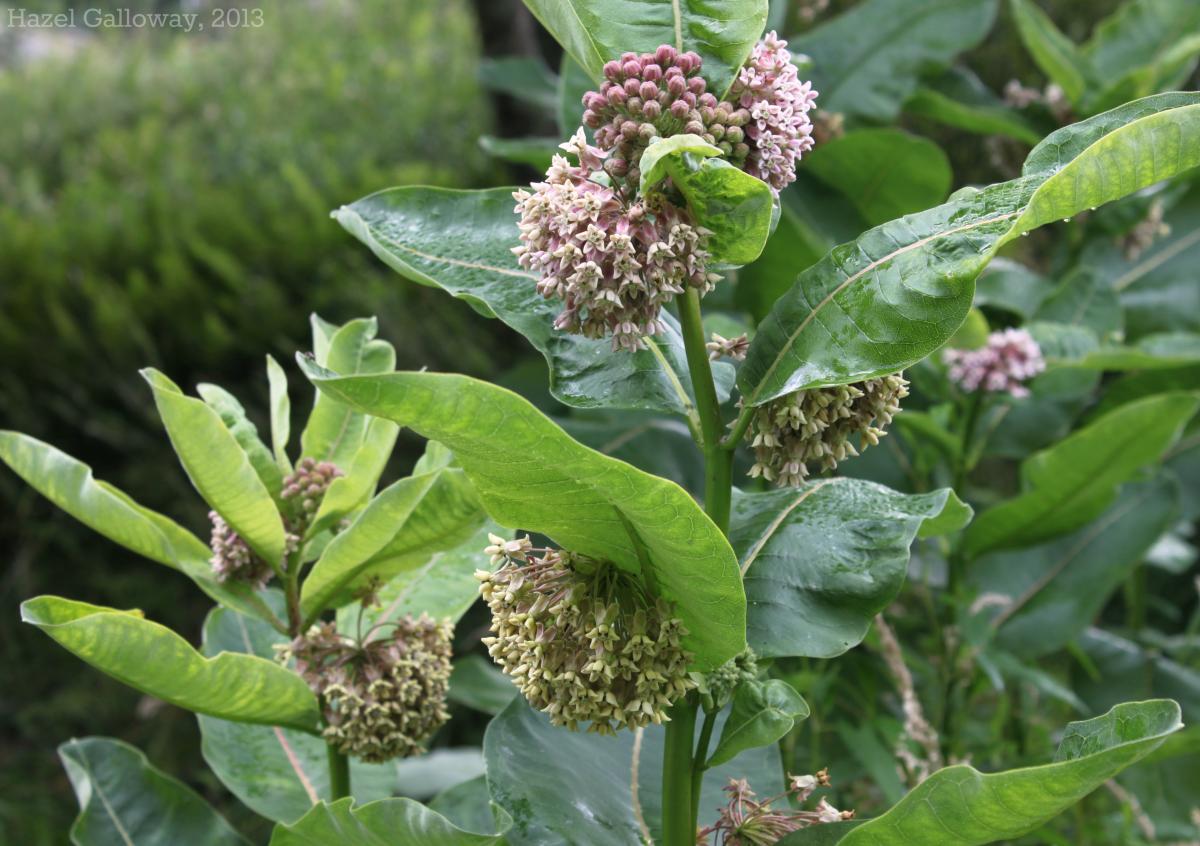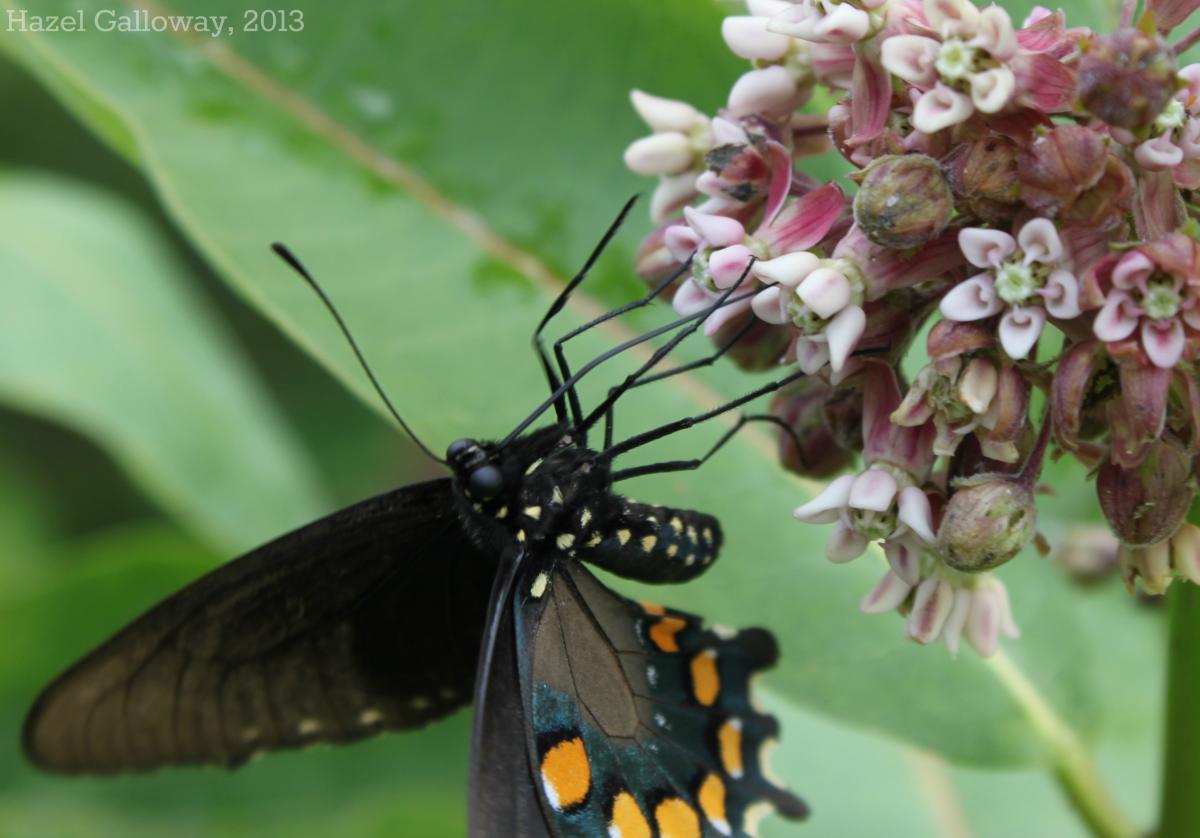The common milkweed, a native of most of the Eastern US, was one of the first plants introduced from the US to Europe by transatlantic travel. In the mid-1700s, however, Linnaeus named it based on his mistaken belief that it had been introduced from the Orient; syriaca means ‘of Syria.’

 Asclepias syriaca is a large perennial, growing up to 1.8 m (6 ft) tall. It has an unbranched stem which bears large, broad, oblong leaves set in opposite pairs. The stem, the lower surfaces of the leaves, and other parts of the plant are covered in fine, white hairs which likely serve as a defense against insect predation. When the central stem or the leaves are damaged or torn, they exude the opaque, milky sap for which the plant is named. This sap contains cardiac glycosides, which are toxic to many animals. Monarch butterfly caterpillars famously take advantage of this toxicity—which they themselves are immune to—by feeding exclusively on the milkweed, thereby accumulating the toxins in their body. Even after they metamorphose into butterflies, the insects retain enough poison to serve as a deterrent to predators. Although the sap is toxic to human in large quantities, cardiac glycosides derived from milkweed and other natural sources have been shown to be important and effective drugs for the treatment of congestive heart failure or cardiac arrhythmia. In tribute to its medicinal value, this genus of milkweed takes the name Asclepias after the Greek god of healing, Asklepios.
Asclepias syriaca is a large perennial, growing up to 1.8 m (6 ft) tall. It has an unbranched stem which bears large, broad, oblong leaves set in opposite pairs. The stem, the lower surfaces of the leaves, and other parts of the plant are covered in fine, white hairs which likely serve as a defense against insect predation. When the central stem or the leaves are damaged or torn, they exude the opaque, milky sap for which the plant is named. This sap contains cardiac glycosides, which are toxic to many animals. Monarch butterfly caterpillars famously take advantage of this toxicity—which they themselves are immune to—by feeding exclusively on the milkweed, thereby accumulating the toxins in their body. Even after they metamorphose into butterflies, the insects retain enough poison to serve as a deterrent to predators. Although the sap is toxic to human in large quantities, cardiac glycosides derived from milkweed and other natural sources have been shown to be important and effective drugs for the treatment of congestive heart failure or cardiac arrhythmia. In tribute to its medicinal value, this genus of milkweed takes the name Asclepias after the Greek god of healing, Asklepios.
The common milkweed is also well known for its showy flowers, attracting a host of pollinators, from monarch butterflies to honey bees to ruby-throated hummingbirds. Milkweed requires cross-pollination to produce fertile seeds. Other animals, such as yellow jackets, frequent milkweeds to predate on pollinators or on smaller insects trapped in the flowers. The flowers are faded pink to reddish purple, and grow in tightly-packed clusters emerging from the axils of the upper leaves of the stem. The blooming period lasts for 1-1½ months in mid- to late-summer, after which milkweed plants begin to produce their seed pods. Once the large pods mature, they split open along one side, releasing many fluffy seeds to be borne away by the wind. During World War II, these light and springy seed hairs were actually used to replace other fibers, which were in short supply, as a filling material for life jackets.
Milkweed specializes in colonizing disturbed areas across its range, in both natural and developed habitats. It can be found along roadsides, woodland borders, old fields, thickets, and sandy meadows. This sample was collected along the dam around the edge of the pond.
Hazel Galloway
Sources:



